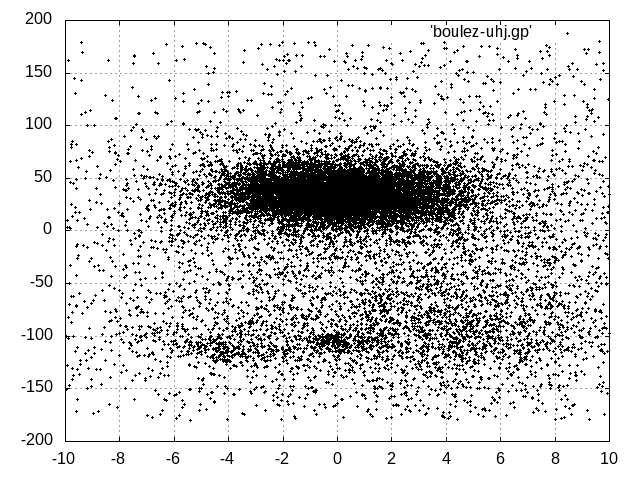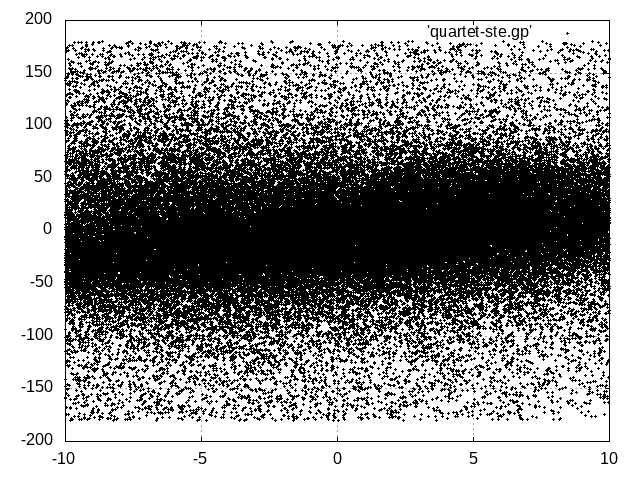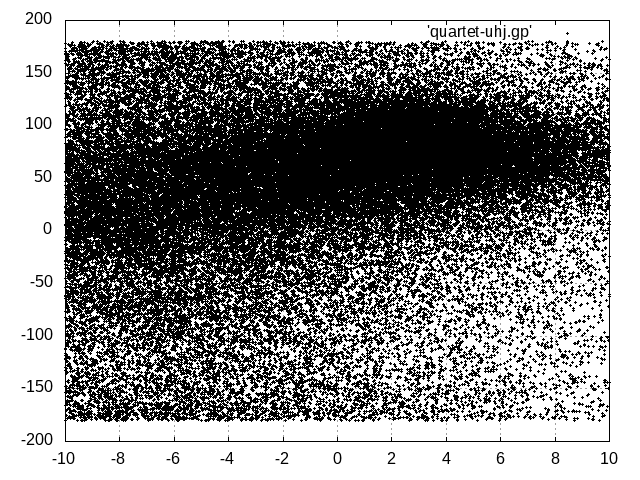Is it possible to detect if a stereo recording is actually an UHJ-encoded Ambisonic one ? From the short experiments reported below the answer seems to be positive. These are just the results of about one hour of work (including writing the software), further work should lead to improved results.
The scatter plots below were created as follows:
* FFT analysis of L and R signals, FFT size 1024 samples (48 kHz sample rate), raised cosine window, 50 percent overlap.
* For each FFT output, and for all frequency bins from 100 Hz to 5 kHz, check power against threshold, check ratio of L and R powers, if within 10 dB plot this ratio in dB (X), and the phase difference (Y)
The first recording is a fragment of Boulez' Anthemes (solo violin and electronics), 8 discrete tracks and artificial reverb mixed down to stereo and to UHJ encoded Ambisonics.
The difference is quite obvious: in the stereo version center front sources have the same phase in L and R, while the UHJ encoded version shows the exptected phase difference of around 35 degrees.


The second example is the string quartet demo recording made at Midas Studios, from ambisonia.com. The stereo version was created using 2 virtual hypercardiods at an angle of around 110 degrees. The UHJ version is just an encoding of the original Ambisonic file.
The slight slope of the phase distribution in the stereo version may mean that the microphone used was not fully coincident. In the UHJ encoded version the mean phase difference between L and R is again offset as expected.

